#Capcom Generation 4
Text

Just reveal Wesker already you cowards.
#resident evil#resident evil 4 remake#albert wesker#you can't fool me Capcom I see the space to conveniently add another character icon#jokes aside I generally want to see Wesker in all his RE Engine glory#my posts.
54 notes
·
View notes
Text
Idk maybe it's my adversity to forced het but I truly don't see the "significant romance" between Ada and Leon. I don't get it. I see them caring about each other, absolutely, but I don't see them ever having been 'in love'. They knew each other for like 8 hours MAX, and most of that time they were separated. I'm sorry I just don't understand capcom's (and many of the straight fans') obsession with insisting that Ada and Leon have this long history of being in love when they just... Don't.
#Not against aeon shippers ofc this is just @ canon Ada and Leon interactions in general#And how capcom treats them like star-crossed lovers even tho they literally just met that day and knew nothing ab each other#Ada Wong#leon kennedy#leon s kennedy#Resident evil#Resident evil 2#Resident evil 4
26 notes
·
View notes
Text

These are my favorite games of all time
AMA
#tabs#totally accurate battle simulator#hi fi rush#mario kart#mario kart wii#sonic the hedgehog#sonic#sonic generations#mortal kombat#mortal kombat 9#mortal kombat 2011#street fighter#street fighter 4#super street fighter 4#marvel vs capcom#marvel vs capcom 2#sonic riders#jet set radio#guacamelee#a hat in time#dead rising 3#rayman legends#dragon ball fighterz#teen titans game#castlevania#aria of sorrow#symphony of the night#castlevania bloodlines#lethal league blaze#mortal kombat armageddon
7 notes
·
View notes
Text
it's so scary that 3 of my favorite games of all time might actually all be 6th gen Capcom games but you have to understand the streak they were on dude.
#devil may cry#resident evil#killer7#resident evil 4#devil may cry 3#sixth generation gaming#retro gaming#video games#capcom#need to figure out a way to see if dmc3 can run smoothly on my desktop again#last time i tried there was something insane with the audio that caused it to CHUG
9 notes
·
View notes
Video
Monster Hunter Sunbreak, but It's No Big Deal!
(A celebration of both MH/Amphibia)
#monster hunter#monster hunter rise#monster hunter sunbreak#mh#mhrise#mh sunbreak#monster hunter 4 ultimate#monster hunter generations ultimate#monster hunter tri#amphibia#it's no big deal#no big deal#Disney#Disney Channel#gaming#capcom#rathalos#wind serpent ibushi#thunder serpent narwa#malzeno#lunagaron#garangolm#seregios#gore magala#shagaru magala#anne boonchuy#anne savisa boonchuy#marcy wu#marcy regina wu#sasha waybright
39 notes
·
View notes
Text
bro... ashley is ACTUALLY voiced and mocaped by the same actress that did everything for jill in re3r. wth.
#what is capcom even thinking#SURE ashley and jill are never going to interact#but like. can we have consistency if everybody is a new engine model?#like so far leon and claire seems to be consistent#chris is sure doesn't. neither is jill aparently cause her actress played already 4 different roles in other REs#like i get. they don't want to pay union actors... but then hire other actors? pay them?#Ada also is recasted in RE4R like i really don't get#sure like. Square Enix doesn't care about their VAs but at least their idea for going to new actors in new generations of games is somewhat#okay?*#and sure. like me and 5 other people care about this or VAs. especially in Resident Evil but#IS THAT TOO MUCH TO ASK#i still hate heisenberg ass because all i hear is just nicolai from RE3R#my ramblings
13 notes
·
View notes
Note
At what point in time did you see a giant hammer and go “yeah, that’s my main.”
Monster Hunter: World is a 2018 action role-playing game developed and published by Capcom. The fifth mainline installment in the Monster Hunter series, it was released worldwide for PlayStation 4 and Xbox One in January 2018, with a Windows version following in August 2018. In the game, the player takes the role of a Hunter, tasked to hunt down and either kill or trap monsters that roam in one of several environmental spaces. If successful, the player is rewarded through loot consisting of parts from the monster and other elements that are used to craft weapons and armor, amongst other equipment. The game's core loop has the player crafting appropriate gear to be able to hunt down more difficult monsters, which in turn provide parts that lead to more powerful gear. Players may hunt alone or in a group of up to four players via the game's online multiplayer.
Announced at E3 2017, Monster Hunter: World adopts the series' standard formulas from its older home console roots and recent handheld games to take advantage of the higher processing power provided by modern consoles and computers. Changes made in Monster Hunter: World include creating environmental spaces that are fully connected and removing the "zones" that were necessary for the PlayStation 2 and handheld games, more advanced monster artificial intelligence and physics, a more persistent cooperative multiplayer experience, and a refinement of the game's tutorials and user interface to help with bringing new players into the series. These changes led Capcom to plan for the game's simultaneous release worldwide, since Monster Hunter as a series has generally languished outside of Japan partially due to disparate release schedules. Capcom also opted to support online play between these different geographic regions for similar reasons. The delay for the Windows release was attributed to Capcom seeking to make sure its first foray into the Windows market was optimized for players on computers. By April 2020, updates to the game were synchronized among all platforms.
Monster Hunter: World received critical acclaim upon release, with critics praising how Capcom was able to make the game more accessible to new players and to Western markets, without detracting from the series' core gameplay elements and enjoyable difficulty, and fully taking advantage of the computational capacity of modern consoles to create living ecosystems, with some even calling it the best in the franchise. Monster Hunter: World is the single highest-selling game in Capcom's history, with over 21 million copies shipped by July 2022. A DLC expansion pack, subtitled Iceborne, was released for home consoles in September 2019 and for Windows in January 2020, and reached 10 million sales by December 2022. The next mainline installment, Monster Hunter Rise, was co-developed alongside World and announced for a worldwide release on Nintendo Switch in March 2021, with a Windows version released the following year.
356 notes
·
View notes
Text
As someone who grew up with RE4, which is my all-time favorite game, I feel like I have to swallow my pride and put the nostalgia glasses away because not only is it a good remake, it did do some things better than the original. Just off the top of my head:
1) Luis’ death. I always thought Luis was wasted in the original, especially since his death was anticlimactic. He just sorta dies and the game moves on. In the remake, he gets killed by Krauser, which is a HUGE improvement since it makes the conflict between Leon and Krauser feel more personal, which gives Luis’ death more narrative weight.
2) Ashley Graham in general. The redesign, the voice acting, the improved characterization. I went from feeling compelled to protect her to actually wanting to protect her. In one game, she went from zero to Ellie Williams (not a perfect example, but you get the point).
3) The change in tone. I’m fairly neutral to the “action movie” era of Resident Evil, but I do agree that the tone was off when compared to the previous games. The remake feels a bit like course correction since the story is mostly the same, but the tone is more in line with the older Resident Evil games. Less action hero, more survival horror.
4) The cult stuff feels a bit more thought out here.
5) Hunnigan in general. I like that she’s an actual character here and not just a face on my phone.
6) The Krauser boss fight is an actual fight, not just you mashing QTEs.
7) The storyline and characters feel more thought out in general. We actually get to see Leon’s transition from Raccoon City cop to secret agent, Luis’ character got expanded on, the feud with Krauser felt more personal, and so on. Capcom took the Resident Evil game that wasn’t really known for its amazing story (let’s be real here) and actually improved it.
I guess that was to be expected since making the story more serious meant that the plot had to be updated. Resident Evil games tend to get a pass for their thin storytelling since players usually don’t take the story seriously due to how cheesy and campy they are, which is fine since that’s part of the appeal. But by making the story more serious, you’re telling players that they need to actually be invested in what’s going on, which you can’t do if the story is thin. All this to say that the darker tone and improved storytelling feels like a mutual thing.
#resident evil#biohazard#resident evil biohazard#re4#resident evil 4#resident evil 4 remake#re4 remake#re4r spoilers#capcom#leon s kennedy#ashley graham#jack krauser#luis sera#ingrid hunnigan#ada wong#osmund saddler#horror video games#video games#video game#re4r#re4make
548 notes
·
View notes
Text
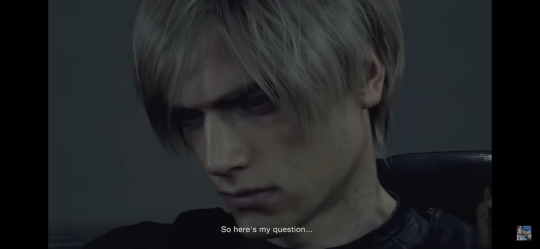



Appreciation for Leon’s Character Design in Resident Evil 4 Remake:
I just wanted to discuss Leon’s character design in RE4 Remake, because WOW, holy moly
Now first, I’d like to admit that it took some time for me to get used to his new design in this game. Leon was THE first video game character I ever found sexy, so his OG RE4 appearance was and still is absolutely beloved to me, and thus any differences between his design in this game and his design in the OG RE4 were jarring enough that I found his new design off-putting initially
But now that I’ve gotten used to it, I can confidently say that it stands right alongside OG RE4 as THE iconic Leon character design, imo
And I just wanted to talk a little bit more in depth about why I love it so much, because it is CLEAR that Capcom put a lot of thought and care into his new design
(Putting under a read more so that I don't clutter up the tag with my borderline incoherent ramblings)
• First, on a more general note, I’d like to say that I deeply appreciate the fact that, even in 1998 with the OG RE2, Capcom designed Leon with the intent of making him a pretty boy. It was a HUGELY unconventional and brave decision on Capcom’s part since it was and still is exceedingly rare for a video game, especially a horror video game, that has a western male protagonist and that is attempting to appeal to broader international sensibilities to make that male protagonist a pretty boy. The overwhelming majority of the time, in order to conform to broader international expectations of masculinity, if a video game has a western male protagonist, they will make him either completely average-looking or a gruff and grizzled hyper-masculine man
Now, am I saying that there's something wrong with enjoying or preferring average-looking or gruff and grizzled hyper-masculine male characters? Absolutely not. After all, I myself have my fair share of them that I enjoy, e.g. James Sunderland and Gordon Freeman. And am I saying that video game companies design western male characters with the intent of making them ugly? Absolutely not. Most of them just designed them with the intent of making them handsome in a way that conformed to traditional international standards of masculinity
In actuality, all I'm trying to say is, video games very rarely make western male protagonists pretty boys due to a fear of enraging international audiences who have very rigid notions of masculinity. A fear that is very warranted, in fact, considering how vitriolic male gamers get whenever video games have the ~audacity~ to make western male protagonists pretty boys. For example, back when MGS2 first released and Raiden was the protagonist, many male fans went into an apoplectic frenzy of hate, and they justified doing so by saying the 2001 equivalent of "forcing me to play as a pretty boy is ruining civilization and infecting me with effeminate wokeness." So, because of that, many video game companies absolutely refuse to make western male protagonists pretty boys
And honestly, it makes Leon's character design as a pretty boy even more unique and bold. So much so, even, to the extent that, back in 2005, when I was eight years old and first began playing the OG Resident Evil 4 on my GameCube (it was my first Resident Evil game, by the way), I was downright gobsmacked when I first saw Leon, because he was the first western male protagonist in a video game that I saw that was pretty. And I was not the only one feeling this way, because this unique design definitely sent shockwaves throughout the gaming community at the time, as his pretty looks made him stand out among the crowd of gruff and grizzled manly men and turned him into one of the few male video game sex symbols out there. (And thankfully, Leon was cool enough in RE4 that male fans embraced him and his pretty boy status. Funnily enough, they did the same for Raiden once MGRR came out too)
And Leon is most definitely a pretty boy in this game, as even Krauser himself explicitly acknowledges
• Next, I love how they blended Leon's RE2 Remake and OG RE4 designs. Capcom faced the unenviable task of not only maturing Leon's RE2R face (which was and still is controversial among the fandom), but having to do so in a way that bridged the gap between RE2R Leon and RE4R Leon while operating under the looming shadow of the universally beloved OG RE4 design. They knew that, with Leon's status as a sex symbol, they were under especially heightened scrutiny to get this right, and that they would be subject to particularly severe backlash if they botched it. Thankfully, they somehow managed to strike the right balance in this game and matured his face in a way that not only made him very closely resemble the iconic OG RE4 design, but remain recognizable as someone who had once been RE2R Leon as well. Overall, I am supremely satisfied with the results, as they modified away a lot of the issues I had with his RE2R face while still maintaining visual continuity and making him very pretty like his OG RE4 design. Both OG RE4 and RE4R Leons are pretty, and I'm so happy
• Also, I love love love the fact that they made RE4 Remake Leon very visibly traumatized. Everything about his appearance screams depression and PTSD: his cheeks carry hints of gauntness, his gaze is haunted, and the bags beneath his eyes are so deep that they're literally bruised purple. Yeah, while he got a lot more muscular, all of it is just pure rangy muscle, which suggests that even though he exercises a lot, he likely struggles to eat enough, which is why his face is more gaunt than it should be. Also, his haunted gaze just very obviously shows that he's seen things that no human being should ever have to witness. And his painfully exhausted eyes show that he's overwhelmingly sleep deprived because either he is overworked to the point that he never gets any rest or he himself struggles to sleep because of nightmares, or both. In fact, his sleep exhaustion is so severe that there is literally purple discoloration down to his literal cheekbones. This man hasn't seen a bed in years
Yeah, there are a lot of video game characters that are traumatized. However, for the vast majority of them, their trauma doesn't manifest in their appearance in any way. They'll still have bright eyes, full cheeks, and flawless faces. But Leon??? Oh, his trauma is visible from miles away. You can visibly tell that Raccoon City turned his world upside down, that the U.S. government enslaved him by threatening to kill Sherry if he didn't agree to work for them, and that he was forced to re-traumatize himself over and over again by constantly going into missions where he faces off against life-threatening bioterrorist monsters, and that it all took an enormous toll on his physical, emotional, and mental health
• In addition, I adore how his design makes it believable that he's an experienced badass special agent. His default facial expression is calm and stoic, his gaze is visibly jaded, and his entire unfazed mien shows that he is cool and collected. It is automatically believable that he is a seasoned special agent who has encountered these kinds of threats numerous times before. He's seen it all before, and he knows he'll see it all again
• Lastly, on an ending note, I love how Capcom managed to make him look visibly traumatized and seasoned while still keeping his prettiness. It is very difficult to give a character the kinds of visual flaws that usually denote trauma (gaunt cheeks, eye bags, etc) while still keeping them pretty, but Capcom knocked it right out of the park. He's not only visibly traumatized and experienced, but he's also very pretty. In fact, rather than making it so that he's pretty despite his visible trauma and experience, they made it so that his visible trauma and experience actually enhances his prettiness. Those gaunt cheeks and exhausted eyes give him a tragic beauty that cannot be matched
And it makes Leon's character design even more unique since he's not only a pretty boy, which is already very rare for western male protagonists in the video game world, but he's a visibly traumatized pretty boy, which is even rarer
I just..... gaaaaaaah, I love his design, I love his design sooooooo muuuuuuuuuch
#leon kennedy#león scott kennedy#leon s kennedy#resident evil 4 remake#resident evil 4#re4#re4 remake#re4r#my stuff#not op#resident evil#queue
242 notes
·
View notes
Text
Prototype Jack (プロトタイプ・ジャック Purototaipu Jakku?, in Russian: Прототип Джек) (P. Jack for short) is a playable robot in the Tekken series of fighting games. Prototype Jack was created and designed by Doctor Bosconovitch as the prototype model of the main Jack series. However, after it was stolen by Heihachi Mishima, it was pitted against the main line of Jacks.
Contents
1 Biography
1.1 Personality
1.2 Appearance
1.3 Outfits
2 Story
2.1 Tekken
2.2 Tekken 2
3 Other Appearances
3.1 Tekken: The Motion Picture
3.2 Tekken Tag Tournament
3.3 Namco X Capcom
3.4 Tekken Tag Tournament 2
4 Gameplay
4.1 Fighting Style
4.2 Moves
5 Character Relationships
6 Trivia
7 Gallery
8 References
9 Navigation
Biography
In search of a new, more devastating, weapon, the Russian military began work on the development of androids - superhuman robots built for the purpose of causing destruction. The first step in production was the prototype model of what was to become a line of military robots, which were named "Jack". The prototype was stolen by Heihachi Mishima and his Mishima Zaibatsu, but Russia was still able to produce their main line of Jack robots without the prototype at hand. With the project a success, the first Jack was entered into the King of Iron Fist Tournament. On learning of this, Heihachi entered Prototype Jack into the tournament to face its upgraded counterpart. Prototype Jack was ultimately destroyed by Jack. A couple of years later, the genius Russian scientist, Doctor Bosconovitch, was kidnapped by the new CEO of the Zaibatsu, Kazuya Mishima. Bosconovitch repaired and updated Prototype Jack. After being remodeled and gaining new abilities, Prototype Jack was entered into the second tournament as a rival to the upgraded Jack robot, Jack-2.
It is unknown what happened to Prototype Jack after this. In the non-canonical Tekken Chronicle, some of Prototype Jack's parts, along with parts from Jack and Jack-2, were used in the creation of Gun Jack.[3] Given that Gun Jack inherited some of Prototype Jack's moves, and was partially built in Mishima Industries where Prototype Jack received its upgrades, it is possible that canonically its remains were indeed dismantled and used in the creation of Gun Jack.
Personality
Despite being a robot, Prototype Jack was able to develop some kind of sentience. As a result of being discarded in favor of the main Jack series, it came to resent the Jacks and their creators - the Russian government. As a result, Prototype Jack is an aggressive character, determined to grow stronger and smarter in order to destroy all of its opposition, especially the Jacks, which it sees as potentially obsoleting it and jeopardizing its utility. While silent in battle with the exception of generic grunts and growls, outside of battle Prototype Jack was very vocal about its thirst for strength and intelligence, and frequently practices its newly-learned abilities to the point of perfection to ensure it will never again be defeated.
Appearance
As a prototype model, Prototype Jack's appearance lacks the finesse of the main line of Jacks. In its original appearance, it lacks a human-like torso and arms; its robotic frame is visible and it possesses a pincer and a drill in place of arms. Prototype Jack has a humanoid head, although it is noticeably damaged, and one of its boots is a metal prosthetic. After being remodeled, Prototype Jack gained a new, more distinctive look. It now looks more like the main line of Jack robots, although it lacks the Jacks' skin-like finish; it instead has a shiny, metallic finish. It also now has a rotating hand, a feature which was expanded upon in later releases, allowing it to spin at the waist also.
Outfits
Main Article: Prototype Jack/Outfits
The original build of Prototype Jack wore only green camouflage pants and left the rest of its robotic body exposed. Its second outfit was a bright metal exoskeleton or suit of lightweight body armor, giving it a Robocop-like appearance. After being remodeled for Tekken 2, Prototype Jack received the same outfit of camouflage pants, tank top and combat boots worn by the main line of Jack robots. While these Jacks sport a distinctive Mohawk hairstyle, Prototype Jack differed by wearing sunglasses and a military cap.
Story
Tekken
Version 1: The prototype for Jack was developed in Russia. Since it was just a step in the production, the skin was removed from the mecha. Prototype Jack (or P. Jack, for short) was built only for power, so his power capacity far surpasses that of the completed Jack. The tournament's sponsor, Heihachi Mishima, has entered P. Jack into the contest in order to pit him against Jack.
Version 2: P. Jack is the experimental version of Jack, which Russia developed. As it is only a prototype model, its mechanics are still evident. Its overall balance is bad, but even so, it possesses a power that far exceeds Jack's own. Heihachi has entered Prototype Jack in the tournament to confront Jack, whom it hates.[4]
Tekken 2
Tekken 2 Prototype Jack's Ending
Version 1: After the first King of Iron Fist Tournament, the remains of the first Prototype Jack unit (a first-stage model of the final Jack model) were repaired after almost being destroyed by Jack's rampaging combat abilities. Upon reactivation, P. Jack complained that his alter-ego had received a refit, and he repeated his complaint until his fuel ran out. Now resting in Kazuya Mishima's laboratory, P. Jack was left untouched for months before a back-up fuel supply reactivated him, and once again he began his constant pleas for a new look. To quiet him, Kazuya gave his captured scientist, Doctor Bosconovitch, the task of remodeling the robot.[citation needed]
With a cunning memory change, the doctor managed to convince P. Jack that his new body afforded him superior protection to Jack's, despite it being only a hat and sunglasses. Kazuya is currently goading P. Jack, demanding more programmed maneuvers in time for The King of Iron Fist Tournament 2. Having repeated his fighting moves over and over (to such an extent that the doctor disconnected P. Jack's voice box), P. Jack now feels his next encounter with Jack will have a much different conclusion.[citation needed]
Version 2: Prototype Jack, an android built for military applications. Prototype Jack solicited Kazuya's assistance with upgrades after learning that only its successor, Jack, was making advances in that area, and for reasons beyond its understanding, Kazuya promptly agrees and has Dr. Bosconovitch comply with the androids request. Unbeknownst to it, the only changes made were to its outer shell, which was now armor plated. Prototype Jack despises both Jack and its developers, namely Russia. Recent overwrites of its own CPU has resulted in memory loss, causing Prototype Jack even more grief.[5]
Ending Description: Prototype Jack traverses a tunnel and emerges from the shadows into a chamber with a vertical opening. P. Jack turns on the boosters in its legs and rises upward, into the sky. As it flies away, it explodes and three screws drop back onto the ground.
Other Appearances
Tekken: The Motion Picture
In Tekken: The Motion Picture, three Prototype Jack robots are programmed to protect the labs in which Lee Chaolan and Heihachi Mishima had their test subjects hidden. There comes a point in time where the three Prototype Jacks and Jack-2, along with Lei Wulong, have a battle in the middle of the lab.
Tekken Tag Tournament
Tekken Tag Tournament Prototype Jack Ending
Prototype Jack appeared in Tekken Tag Tournament as a playable character.
Ending Description: Prototype Jack and Gun Jack are standing facing each other. They nod to each other in unison, then turn to face the screen. They then both lift their arms and fly up into the sky, performing a synchronized version of one of their win poses. This ending takes place at Paul's stage.
Namco X Capcom
Prototype Jack appeared in Namco X Capcom as an enemy character. It first appears in Chapter 14, along with a second Prototype Jack, as part of Waya Hime's army, when she attempts to ambush Bravoman and Jin Kazama.
Tekken Tag Tournament 2
Prototype Jack appeared as a playable character in Tekken Tag Tournament 2, sporting the same look it received in Tekken 2 and the original Tekken Tag Tournament. Its fighting style is very similar to Jack-6's, although it has a slightly different moveset, making use of its rotating hand and torso.
Profile:
The first incarnation of the JACK series, developed by Russian engineers. Hoping to be upgraded along with his fellow JACK units, P. Jack had Dr. Bosconovitch add rotating arms and torso, as well as flight capabilities, to his frame. He is generally well-balanced in all regards, but his strength exceeds previously developed JACK units. He runs on gasoline.[6]
Tekken Tag Tournament 2 Prototype Jack Ending
Ending Description: An enormous Prototype Jack is being built in a construction lab by many regular Prototype Jacks. A regular Prototype Jack walks toward to the large robot and stares at it. The body of the robot under construction opens and steps descend from its torso. P. Jack enters into the stomach of the robot and sits down at a control panel. It activates the robot and prepares to launch with a countdown while the other Prototype Jacks leave the perimeter. Just as the giant P. Jack launches, a regular Prototype Jack rushes back into frame holding up a large screw. It desperately waving to the pilot in an attempt to get iy to abort the (incomplete) giant P. Jack's launch. The pilot, however, misinterprets the worker's actions as a simple good-bye wave, and does a thumbs up. The Prototype Jacks on the ground are left to watch helplessly as the giant P. Jack launches, rising high into the air before exploding, after which three screws fall back into the hangar.
Gameplay
All Jack robots embody the huge, slow and powerful fighter archetype: they need only a few solid hits to destroy an opponent, but they're very slow and their limited moveset can be predictable, so they require good timing to play well. Jacks deal good damage and possess good pokes and throws, but their real advantage comes from the long range of many of their attacks - most of their punishers are able to hit from afar.
In Tekken Tag Tournament 2, Prototype Jack returned with its moveset changed to be more similar to Jack-6's. There are some differences between the two - Prototype Jack utilizes its spinning limb related moves, while Jack-6 possesses extendable arms - but their core gameplay is essentially the same. Prototype Jack also has moves used by previous Jack models that Jack-6 no longer has.
Fighting Style
While other characters utilize Martial Arts, what Jack robots do is best described as "using brute force to annihilate the opponent", and their fighting style is listed as "Brute Force" accordingly. Prototype Jack is no exception.
Moves
Prototype Jack Moves
Prototype Jack/Tekken Movelist
Prototype Jack/Tekken 2 Movelist
Prototype Jack/Tekken Tag Tournament Movelist
Prototype Jack/Namco X Capcom Movelist
Prototype Jack/Tekken Tag Tournament 2 Movelist
Character Relationships
Dr. Bosconovitch - Its original creator and also its remodeler in Tekken 2.
The Jack series - P. Jacks more advanced successors and rivals whom it hates. Defeated by Jack and possibly destroyed by Jack-2.
Kazuya Mishima - Ordered Dr. Bosconovitch to remodel it for Tekken 2.
Heihachi Mishima - Entered P. Jack to fight the main Jack in the first tournament, either for Heihachi's own amusement or as defense against the perceived threat of Jack - although Jack's true target was Kazuya, not Heihachi. It is unclear how Heihachi managed to steal P. Jack from the Russians.
Trivia
General:
Prototype Jack is the only Jack model that doesn't have plutonium blood; instead, it has gasoline in its 'veins'.
P. Jack is also the only Jack robot that has competed in more than one canonical tournament in the Tekken universe, although there is a large difference between its appearance in Tekken and Tekken 2.
Unlike the other earlier Jack models, Prototype Jack is fitted with a rocket booster built into its leg. P. Jack's internal support system can provide up to three "detonations" to the booster.
P. Jack's arm and body are somewhat "loose", as it can spin its hand freely without limitation. This trait has remained unchanged since the first game, when a drill was present in place of its right hand.
Tekken 2
If P.Jack loses a final round in Tekken 2 due to Time Up, it will faint on the continue screen in the same manner as a losing character on Time Up in the original Tekken. This animation also occurs in Tekken Tag Tournament even without a Time Up, and is also used by Roger and Alex in both games.
Tekken Tag Tournament
As of Tekken Tag Tournament, it is shown that P. Jack's left hand and torso can also rotate, as seen in its moves Drill Upper and Tornado Cutter. Gun Jack also retained the spinning hand mechanism when performing the Ground Zero throw; however later models, such as Jack-5, do not have a spinning hand during this move.
Tekken Tag Tournament 2
If Prototype Jack is idle for about six seconds, it will shut down and reboot itself.
Prototype Jack's Tekken Tag Tournament 2 ending is a re-imagining of its Tekken 2 ending.
Prototype Jack, along with Jack-2, Gun Jack, Jaack-4, and Jack-6 are the only Jack robots to appear in more than one game.
Prototype Jack's Item Move has it grab the opponent with a crane and uses it to spin them around before launching them away. This can also be used against mid-air opponents.
Gallery
Prototype Jack/Gallery
References
^ a b c d e f g h i https://www.bandainamcoent.co.jp/cs/list/tekken2/pjack.html
^ P. Jack's official TTT2 profile
^ Tekken Chronicle, p. 70
^ Tekken Zaibatsu Tekken 1 character profiles
^ Tekken Zaibatsu Tekken 2 character profiles.
^ Tekken Tag Tournament 2 Wii U profile.
Navigation
CharactersPlayable CharactersIntroduced in TekkenAnna ·Armor King ·Devil Kazuya ·Ganryu ·Heihachi ·Jack ·Kazuya ·King ·Kuma ·Kunimitsu ·Lee ·Marshall ·Michelle ·Nina ·Paul ·P. Jack ·Wang ·YoshimitsuIntroduced in Tekken 2Alex ·Angel ·Baek ·Bruce ·Jack-2 ·Jun ·Lei ·RogerIntroduced in Tekken 3Ancient Ogre ·Bryan ·Dr. Bosconovitch ·Crow ·Eddy ·Forest ·Gon ·Gun Jack ·Hwoarang ·Jin ·Julia ·King II ·Kuma II ·Mokujin ·Ogre ·Panda ·Tiger ·XiaoyuIntroduced in Tekken TagTetsujin ·UnknownIntroduced in Tekken 4Christie ·Combot ·Marduk ·Miharu ·Steve ·VioletIntroduced in Tekken 5/5:DRArmor King II ·Asuka ·Devil Jin ·Dragunov ·Feng ·Jack-5 ·Jinpachi ·Lili ·Raven ·Roger Jr.Introduced in Tekken 6/6:BRAlisa ·Bob ·Jack-6 ·Lars ·Leo ·Miguel ·NANCY-MI847J ·ZafinaIntroduced in Tekken Tag 2Jaycee ·Sebastian ·Slim Bob ·Super Combot DXIntroduced in Street Fighter X TekkenJack-XIntroduced in Tekken RevolutionElizaIntroduced in Tekken 7/7:FRAkuma ·Claudio ·Fahkumram ·Geese ·Gigas ·Jack-7 ·Josie ·Katarina ·Kazumi ·Kunimitsu II ·Leroy ·Lidia ·Lucky Chloe ·Master Raven ·Negan ·Noctis ·ShaheenIntroduced in Tekken (Mobile)Isaak ·Rodeo ·Ruby ·Tiger Miyagi ·YueIntroduced in Tekken 8Jack-8Non-playable CharactersBossesAzazel (6) ·Devil Kazumi (7) ·Kinjin (TR) ·Revenant (TM)MajorDr. Abel ·Jane ·Shin ·TougouEnemiesType J ·Mokujin Monster ·Monstrous Ogre ·Tekken ForceMinorAkiko Miura ·Bet-rto ·Billy ·Emma ·Feng's Master ·Kazumi's Tiger ·Lee's Secretary ·Legendary Capoeira Master ·Miguel's Sister ·Mr. Baek ·Mr. Chang ·Mrs. Chang ·Mr. Kazama ·Mr. Kliesen ·Mrs. Law ·Mrs. Williams ·Roger's Wife ·Roperto ·Slater ·Olivia ·Sugar ·Thug ·Zafina's GuruDeath by DegreesAlan ·Bryce ·Enrique ·John ·Lana ·Lukas ·RichardOtherFemale Tekken Force Soldier ·Ganmi-chan ·Sake ·Taekwondo Girl ·Wild Card ·Zombie Bride
Others like you also viewed
Jack
Kazuya Mishima
Jun Kazama
Jin Kazama
Heihachi Mishima
Bruce Irvin
Yoshimitsu
Wang Jinrei
Jinpachi Mishima
Anna Williams
Michelle Chang
Doctor Bosconovitch
Paul Phoenix
Baek Doo San
Lee Chaolan Categories
Community content is available under CC-BY-SA unless otherwise noted.
Tekken Wiki Discord
Others like you also viewed
Jack
Kazuya Mishima
Jun Kazama
Jin Kazama
Heihachi Mishima
Bruce Irvin
Yoshimitsu
Wang Jinrei
Jinpachi Mishima
Popular Pages
Kazuya Mishima
Jun Kazama
Heihachi Mishima
Nina Williams
Fan Feed
More Tekken Wiki
1 Jin Kazama
2 Kazuya Mishima
3 Jun Kazama
Latest Discussions View All
JohnMcGurkus Tekken canonical endings? in General 0 0
Raventail2002 Who is your Favorite Character of Tekken and I need your full support everyone in General 1 0
Jordan isle What is your honest opinion of Yoshimitsu ? in Franchise 0 0
Jordan isle Who is your favorite Tekkenverse character ever on this list ? in Fun and Games 4 2
Vextale If we keep a fighter reveal every week for however so long, who do you think would come next? in General 2 1
Baymax6 (PS5) Tekken 8 All NEW GAMEPLAY | ULTRA Realistic Cinematic Gameplay Trailers [4K 60FPS HDR] in General 2 0
Baymax6 TEKKEN 8 - COMPARISON ( JIN KAZAMA ) in General 4 0
Baymax6 Tekken 8 - 10 Amazing Detail From Jin Kazama New Trailer in General 3 0
Baymax6 TEKKEN 8 vs TEKKEN 7 - Jin Gameplay Details You Might Have Missed in General 2 0
KurayamiRE99 Tekken 8 — Jin Kazama in General 4 1
Origin Story: Who’s Who in Gotham Knights Fandom
Jack Tekken Wiki
Scream VI Stars on Who Should Play Their Stab Movie Counterparts Fandom
Kazuya Mishima Tekken Wiki
Subscribe to Save 20% on Disney+ and Star Partner: Disney+
Honest Trailers | The Oscars 2023 (The Best Picture Nominees) Fandom
How Adam Driver Will Fight to Survive Prehistoric Earth in ‘65’ Fandom
Jun Kazama Tekken Wiki
Scream's ‘Stab’ Franchise: A Definitive History (of Fake Movies) Fandom
Jin Kazama Tekken Wiki Explore Wikis
Universal Conquest Wiki
Let's Go Luna! Wiki
Club 57 Wiki
Heihachi Mishima Tekken Wiki
Bruce Irvin Tekken Wiki
Wang Jinrei Tekken Wiki
The Last Of Us Episode 8 Breakdown: Ellie Goes To War with David Fandom
Jinpachi Mishima Tekken Wiki
Could Star Wars' Bo-Katan and Obi-Wan Kenobi Team Up in Live-Action? Fandom
Why Attack on Titan’s Return to Shiganshina is One of the Best Anime Arcs Ever Fandom
Explore properties
Fandom
Muthead
Futhead
Fanatical
Follow Us
Overview
What is Fandom?
About
Careers
Press
Contact
Terms of Use
Privacy Policy
Global Sitemap
Local Sitemap
Community
Community Central
Support
Help
Advertise
Media Kit
Fandomatic
Contact
Fandom Apps
Take your favorite fandoms with you and never miss a beat.
340 notes
·
View notes
Text
Why Capcom should sell the MegaMan rights Nintendo
Why Capcom should sell the MegaMan rights to Nintendo
There are several reasons why Capcom should consider selling the MegaMan rights to Nintendo. The company has a proven track records in successfully rebooting and reimagining classic franchises, and they could bring fresh ideas and resources to revitalize the MegaMan series.
Nintendo's Dedication to Quality and Innovation: Nintendo is renowned for its commitment to quality and innovation in game development. They have successfully reimagined and reinvented their own franchises, such as The Legend of Zelda and Super Mario, multiple times over the years. Nintendo's expertise in creating engaging gameplay experiences and their understanding of what makes a franchise resonate with fans could result in a fresh and exciting take on MegaMan.
Financial and Marketing Support: Nintendo has the financial resources and marketing capabilities to give MegaMan a significant boost. Nintendo's strong distribution network and marketing campaigns could ensure a wide reach for MegaMan games, while Nintendo's global presence and dedicated fanbase would provide a solid foundation for the franchise's success. These companies could invest in high-quality development, marketing, and promotion to maximize MegaMan's potential.
If Nintendo were to reboot and reimagine MegaMan, they could take several approaches:
1. Modernized Gameplay Mechanics: They could introduce new gameplay mechanics that enhance the classic MegaMan formula. This could include new abilities, power-ups, or even a shift to a 3D platforming experience while still maintaining the core elements that fans love.
2. Stunning Visuals: Nintendo has a reputation for delivering visually impressive games. They could leverage their expertise to create stunning, high-definition visuals for MegaMan, breathing new life into the iconic characters and environments.
3. Expanded Universe and Storytelling: They could explore new storylines and expand the MegaMan universe. This could involve introducing new characters, deeper lore, and engaging narratives that provide a fresh take on the series while staying true to its roots.
4. Multiplayer and Online Features: Nintendo could incorporate multiplayer and online features to enhance the MegaMan experience. This could include cooperative gameplay, competitive modes, or even user-generated content, allowing players to create and share their own MegaMan levels.
In conclusion, selling the MegaMan rights to Nintendo could provide the franchise with the resources, creativity, and expertise needed to reboot and reimagine the series. Both companies have a proven track record in successfully revitalizing classic franchises, and they could bring fresh ideas and innovation to the beloved MegaMan franchise.
28 notes
·
View notes
Text
Why Capcom should sell the MegaMan rights to Sega and How Sega should reboot and reimagine MegaMan
There are several reasons why Capcom should consider selling the MegaMan rights to Sega:
1. Revitalizing the franchise: Sega has a strong track record of successfully revitalizing classic franchises, such as Sonic the Hedgehog. By acquiring the MegaMan rights, Sega can bring fresh ideas and innovative gameplay mechanics to breathe new life into the series. This would attract both old and new fans, ensuring the longevity and relevance of MegaMan in the gaming industry.
2. Expertise in platformers: Sega has extensive experience in developing platformer games, which is the genre MegaMan primarily belongs to. With iconic titles like Sonic the Hedgehog and Alex Kidd, Sega has proven its ability to create engaging and enjoyable platforming experiences. This expertise can be leveraged to create high-quality MegaMan games that stay true to the franchise's roots while introducing exciting new gameplay elements.
3. Collaborative opportunities: Sega's strong relationships with other developers and publishers could open up collaborative opportunities for MegaMan. Sega has a history of successful partnerships, such as the Sonic and Mario crossover games with Nintendo. By collaborating with other popular characters or franchises, MegaMan can reach a wider audience and generate even more interest and excitement among gamers.
4. Global reach and marketing prowess: Sega has a global presence and a well-established marketing infrastructure. By acquiring the MegaMan rights, Sega can leverage its marketing expertise to promote the franchise effectively worldwide. This would ensure maximum exposure and awareness for MegaMan, leading to increased sales and a larger fanbase.
5. A fresh perspective: Capcom has been the sole custodian of the MegaMan franchise for many years. By selling the rights to Sega, the franchise can benefit from a fresh perspective and new creative direction. Sega's different approach to game development can inject new ideas into MegaMan, resulting in unique and exciting experiences for players.
Overall, selling the MegaMan rights to Sega would not only benefit Capcom financially but also ensure the franchise's continued success and relevance in the gaming industry. Sega's expertise in platformers, collaborative opportunities, global reach, marketing prowess, and fresh perspective make them an ideal candidate to take the MegaMan franchise to new heights.
Sega has a rich history of creating iconic and beloved video game franchises, and if they were to reboot and reimagine MegaMan, they could bring a fresh perspective to the series. Here are a few ideas on how Sega could approach this task:
1. Visual Overhaul: One of the first things Sega could do is give MegaMan a visual makeover. They could adopt a more modern and detailed art style, while still paying homage to the classic design of the character. This would help to attract new players while also appealing to long-time fans.
2. Expanded Storytelling: Sega could take advantage of their expertise in storytelling and create a more intricate and engaging narrative for MegaMan. They could explore the origins of MegaMan and his creator, Dr. Light, in greater depth, adding layers of complexity to the characters and their relationships. Additionally, they could introduce new villains and allies, providing a fresh and exciting twist to the storyline.
3. Enhanced Gameplay Mechanics: Sega could introduce new gameplay mechanics that would add depth and variety to the MegaMan experience. They could incorporate elements from other successful Sega franchises, such as Sonic the Hedgehog's speed and platforming mechanics or the strategic combat of the Valkyria Chronicles series. This would not only make the gameplay more engaging but also differentiate the rebooted MegaMan from its predecessors.
4. Open-World Exploration: Sega could reimagine MegaMan as an open-world game, allowing players to freely explore a vast and interconnected world. This would provide a sense of adventure and discovery, as players could uncover hidden areas, complete side quests, and encounter unique challenges. The open-world format would also allow for a more immersive and dynamic gameplay experience.
5. Multiplayer and Online Features: Sega could introduce multiplayer and online features to the rebooted MegaMan. They could include co-op gameplay, where players can team up with friends to take on challenging missions or compete in online leaderboards to showcase their skills. This would add a social aspect to the game and extend its longevity.
6. Cross-Platform Compatibility: To maximize the reach and accessibility of the rebooted MegaMan, Sega could ensure cross-platform compatibility. This would allow players to enjoy the game on various platforms, such as consoles, PCs, and mobile devices, enabling a larger player base and fostering a vibrant community.
Overall, Sega has the potential to breathe new life into the MegaMan franchise by rebooting and reimagining it with their unique approach. By combining stunning visuals, compelling storytelling, innovative gameplay mechanics, and multiplayer features, Sega could create a MegaMan experience that captivates both old and new fans alike.
#mega man#megaman zero#megaman x#megaman#megaman (classic)#megaman (classic) [reboot]#megaman zero [reboot]#megaman x [reboot]#megaman reboot
22 notes
·
View notes
Text
Drain Deimos
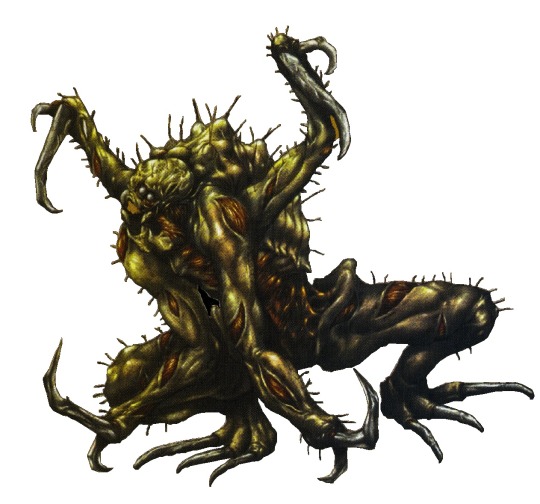
Image © Capcom, accessed at the Resident Evil Wiki here
[Sponsored by @coldbloodassassin. The drain deimos got a significant overhaul in its abilities between RE3 and the recent remake. So I wrote a whole monster before double checking the sponsor's post, and finding that they wanted the other one! So I've included both. The original one is what I'm using the picture for, and is the main stat block, and the remake version is a variant. And gets a new name since it's not doing as much draining anymore.]
Drain Deimos
CR 5 CE Aberration
This creature appears something like a grotesquely mutated insect, warped into human size and humanoid proportions. It has six limbs, the four upper with two hooked claws and the lowest pair with three. It has four eyes surrounding a pair of mandibles and a sharp proboscis, and exposed muscle appears between rents in its exoskeleton.
A drain deimos is a mutant flea, permanently altered by exposure to fleshwarping toxins and diseases. They are almost never created intentionally—a mundane flea that feeds on fleshwarped creatures may mutate in such a way that its larvae will develop into drain deimoses over several generations, and a giant flea may transform into such a horror spontaneously. Drain deimoses are not as skilled at jumping as their progenitor species, but make up for it with skilled climbing abilities.
Drain deimoses feed on both blood and spinal fluid, and the more intelligent a prey item is, the more valuable it is seen as a food source. As such, drain deimoses prefer to attack humanoids than animals, and often go after wizards, bards or other individuals with higher than average intelligence. In prey-rich areas, like cities, drain deimoses will often gather in groups, but they do not cooperate with each other when hunting.
A drain deimos is parthenogenetic, making and fertilizing its own eggs. Thus, a single monster can rapidly multiply to create dozens of monsters in a matter of months.
Variant Drain Deimos
An inject deimos is a further mutation of the drain deimos, in which the proboscis has become an ovipositor. Rather than sucking up spinal fluid, an inject deimos inserts its eggs into its host’s body, which devour it rapidly from the inside. Rather than pinning a single victim and drinking them dry, an inject deimos’ strategy usually involves grabbing, implanting and moving on quickly. An inject deimos has the negative energy affinity defensive ability, and the following special attack instead of brain drain and smell brains:
Implant (Ex) An inject deimos can insert its young into a grappled opponent as part of the action to maintain a grapple. A creature can resist this implantation with a successful DC 17 Fortitude save. If it fails this save, it takes 3d6 points of slashing and piercing damage each round as the young eat it from the inside. A remove disease or similar effect purges the infestation automatically and without further harm. A cure spell cast on the victim, or a DC 25 Heal check made as a full round action, removes the parasites, but nauseates the host for 1 round unless the host succeeds another DC 17 Fortitude save. The save DC is Constitution based.
Drain Deimos CR 5
XP 1,600
CE Medium aberration (fleshwarp)
Init +5; Senses darkvision 60 ft., Perception +7, smell brains
Defense
AC 18, touch 16, flat-footed 12 (+5 Dex, +1 dodge, +2 natural)
hp 59 (7d8+28)
Fort +6, Ref +7, Will +7
DR 5/bludgeoning
Offense
Speed 40 ft., climb 30 ft.
Melee 4 claws +10 (1d4+2 plus grab)
Special Attacks blood drain (1d3 Con), brain drain (1d6 Int)
Statistics
Str 14, Dex 21, Con 18, Int 5, Wis 14, Cha 4
Base Atk +5; CMB +10 (+14 vs. grapple); CMD 25
Feats Agile Maneuvers, Defensive Combat Training, Dodge, Weapon Finesse
Skills Acrobatics +14 (+18 when jumping), Climb +24, Perception +7, Stealth +10; Racial Modifiers +4 Acrobatics, +16 Climb
Languages Common (cannot speak)
SQ catfall, expert climber
Ecology
Environments any land and underground
Organization solitary, pair or infestation (3-18)
Treasure incidental
Special Abilities
Brain Drain (Ex) If a drain deimos pins an opponent, it deals 1d6 points of Intelligence damage each round it drains blood. A creature reduced to 0 Con or 0 Int from this ability dies.
Catfall (Ex) A drain deimos takes minimum damage from falling, and always lands on its feet.
Expert Climber (Ex) A drain deimos’ racial bonus on Climb checks is +16, and it can climb smooth or vertical surfaces, or on ceilings, as if it was under the effects of a spider climb spell.
Smell Brains (Ex) A drain deimos can detect creatures with functioning brains within 30 feet. This functions as the scent monster quality, except that it can only be used to detect creatures with a physical brain (which eliminates most constructs, elementals, oozes and plants, but includes some corporeal undead). A drain deimos can also detect which creatures have higher or lower Intelligence scores.
61 notes
·
View notes
Text
043: P. N. 03

Part of the ill fated Capcom Five, and the only one of the four not to be ported elsewhere, PN03 is anachronistic, both in design and structure. A third person arcade shooter with limited continues, unforgiving difficulty and tank controls, it gives a very bad first impression. The tank controls are the most immediate sticking point, with limited movement that contrasts with protagonist Vanessa’s fluid dance like animations. With twin stick aiming becoming the norm for shooters in the Gamecube generation, PN 03’s automatic lock and inability to move while shooting became common complaints. In short, it’s a shooter that doesn’t reward aiming.
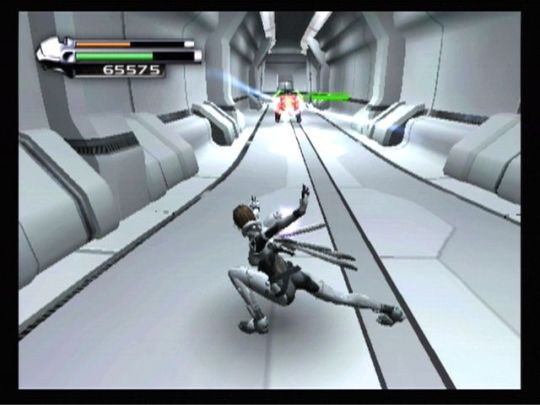
PN03’s emphasis is instead on positioning and rhythm, with the developers intentionally aiming for a more defensive style of play. Attacks automatically lock onto enemies, rotating to you to face them if you’re in range, bullets have noticeable travel time, requiring you to time your barrages and giving you time to react to enemy fire. Vanessa launches her basic shots from her palm, with special attacks available but inputting specific directional combinations on the dpad. Vanessa can’t strafe, instead turning as you rotate the stick,with back on the stick making her twirl backward, quick turns snapping to her sides and back, and the shoulder buttons making her dodge left and right, which can be combined with crouching to roll under obstacles and duck into cover. Combat becomes a dance of weaving these options in and out of enemy attack patterns, mashing out attacks during your opportunities, and positioning yourself to find angles in between cover.
Taken in context alongside the development of Resident Evil 4, the system makes a lot of sense. Both PN03 and RE4 attempt parallel evolutions of the Resident Evil’s tank controls for a more action oriented approach, but RE4 pulls in the camera for a more intimate view, emphasizing aiming and diverse reactions to ratchet up the tension. With PN03’s faster pace, larger spaces and flashier movements, it's easy to see how these tank controls might initially seem out of place.
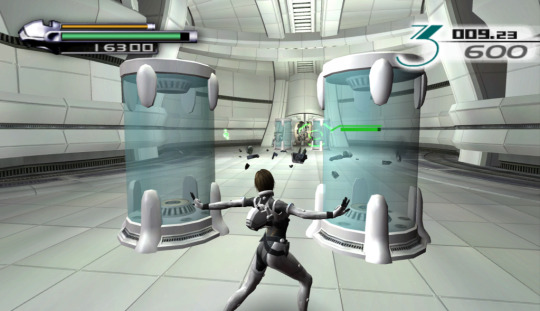
PN03 has its own distinct rhythm, however. Despite the emphasis on long range engagement, its beats are more akin to a brawler, where you control a situation by getting a barrage of hits in, then breaking it up with movement or special attacks to keep away other enemies. Energy Drives, Vanessa’s special attacks, range from single target obliterating attacks, to room clearing homing or ricochet shots, and more importantly, give you full invulnerability during their elaborate animations. Managing the meter required for these attacks, and choosing which groups of enemies to target with them becomes a major part of creating a route through a stage, especially if you attempt to engage with PN03’s scoring system.
That brings us to PN03’s biggest flaw--being on the Gamecube. Of the four games in the Capcom Five that actually completed development, PN03 feels the most restricted by the platform, with the Gamecube controller’s layout constantly getting in the way. The aforementioned Energy Drives are a huge component of the combat, but you’d be forgiven for thinking otherwise, since they’re input on the miniscule dpad of the Gamecube controller, which was so small and imprecise it was frequently used only for auxiliary functions. The motions for these specials are short--only two or three directional inputs--the dpad is imprecise enough that even inputting these in battle can result in a miss and end with you standing still and taking a hit. A major frustration in a game with enemies with one shot attacks and limited checkpoints and continues. There’s some satisfaction to inputting the commands just in time, but for consistency it probably would have been better to assign them to single directions or the C-stick.
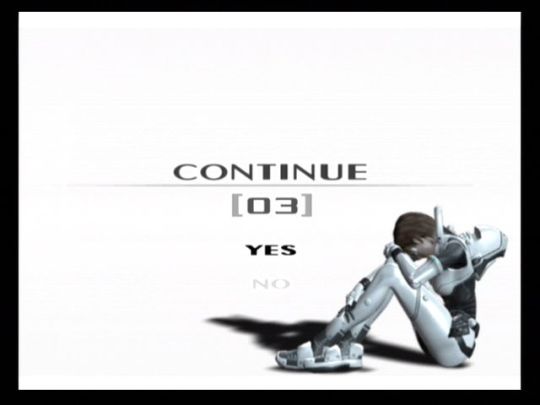
The problem is exasperated by the default difficulty of the game, where enemies take a lot of hits, making your basic shots feel weak. Ironically it leads to a lot of button mashing--something the devs have said they wanted to disincentivize--since shots can be fired faster by mashing. Alongside the limited initial continues, learning curve of the movement, instant kills, and input frustrations it gives PN03 a miserable introduction.
Thankfully PN03's easy mode provides a gentler intro. Every frustration of the normal game is still there, but with enemy damage and health reduced you're given more leeway to make mistakes. The lowered enemy health also helps to speed up the pace, allowing you to move through stages faster and spend less time mashing. It's especially helpful before you upgrade your suit's damage, something that's hard to do efficiently on your first playthrough, since it requires you to play well enough to take advantage of the game's scoring system.
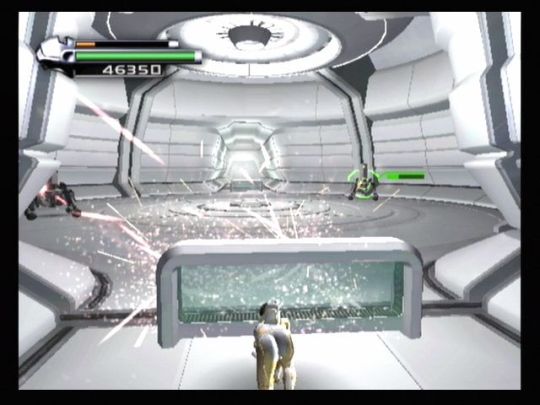
Take the time to learn the intricacies of the movement and the scoring system and there’s a compelling rhythm to it. It’s easy to see the origins of Resident Evil 4’s Mercenaries mode in it. The same focus on controlling crowds using invincible moves, using the environment, and creating a route through enemies to keep a combo going is here. But here precision play isn’t about picking shots, but picking moments. With good timing you can slip through fatal missile barrages, angle your shots to catch enemies approaching around a corner, and launch an Energy Barrage that’ll clear a room and rack up the combo counter.
Even with the low variety of enemies and environments, the basic loop of chaining together kills and aiming for high scores is strong enough to keep up the momentum through PN03’s short runtime. It’s clear this was a project with a tight deadline and budget, showing all the signs of a work whose ambitions were larger than the resources allocated. Director Shinji Mikami has even been on record stating that Vanessa was originally intended to use guns, but they couldn’t get the shooting animations working in time.
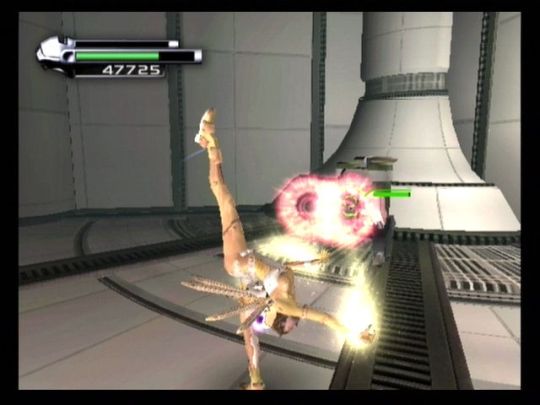
What’s left of PN03 is a skeleton of a game. It evokes so many of the future ideas that would be built upon it, and provides a strong structure for them, but its actual form is barren and thin. With a weak first impression and an audience more than ready to dismiss it for its deviation from third person shooter standards, PN03 was never really given a proper shot. In recent years there’s been a retroactive appreciation for it, but its lack of commercial success and subsequent rereleases have left it as more of a curio in the Gamecube’s library. Its lean construction makes it one of the easier titles to emulate, and with Gamecube emulation being the most advanced of its generation, it’s easy to get up and running and give it a shot--without the awkwardness of the Gamecube controls holding it back.
13 notes
·
View notes
Text
On the 12th of November, twenty-one years ago, Resident Evil Zero was released in North America for the GameCube.
It is a prequel to Resident Evil, covering the ordeals experienced in the Arklay Mountains by special police force unit, the S.T.A.R.S. Bravo Team. The story takes place in July of 1998 and follows officer Rebecca Chambers as well as convict Billy Coen as they explore an abandoned training facility for employees of the pharmaceutical company Umbrella. The gameplay is similar to other Resident Evil games, but adds the ability to switch between characters to solve puzzles and use unique abilities.

Development for Resident Evil Zero began for the Nintendo 64 in 1998. The partner system was created to take advantage of the short load times possible with the capabilities of the Nintendo 64 Game Pak. The cartridge format also provided limitations, as the storage capacity was significantly less than that of a CD-ROM. The team had to approach the design differently from previous series entries to conserve storage space. Resident Evil Zero was designed to be more difficult than previous Resident Evil games. The team removed the item storage boxes present in earlier games and introduced a new item-dropping feature. Production was switched to the recently unveiled GameCube after development slowed due to memory storage issues. Only the concept and story remained from the original game, which had to be rebuilt.
Resident Evil Zero received generally positive reviews. Critics praised the graphics and audio for building a haunting atmosphere. Opinions on the new partner and item systems were mixed. Some found the changes were an improvement and added new layers of strategy; others believed the changes were cumbersome or non-innovative. The controls were panned as outdated and Capcom was criticized for not evolving the series' tank controls.
Resident Evil Zero was commercially successful, having sold over 4 million copies across all platforms.
#Resident Evil#Resident Evil Zero#Resident Evil 0#Biohazard#Biohazard Zero#Biohazard 0#Rebecca#Billy#Rebecca Chambers#Billy Coen#Nintendo GameCube#Nintendo#GameCube#Capcom#Video Games#Gaming
21 notes
·
View notes
Text
I just finished: Resident Evil 4 Remake!
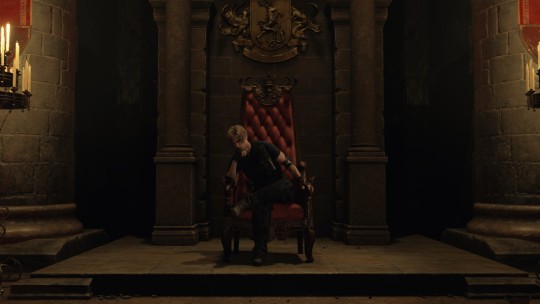
Controversially perhaps, even though I'm a huge fan of the resident evil franchise in general, I'm not a huge fan of 4. Even after playing it again and actually managing to finish it for the first time, I still feel it's the biggest stain on the franchise - which I no objectively it isn't, 5 and 6 are in many ways arguably worse and there are plenty of awful spin-offs, but 4 is for some reason the one that bothers me the most.
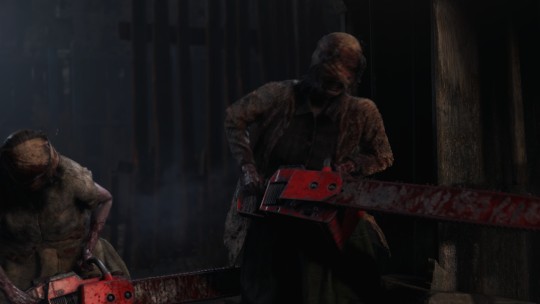
Fundamentally I think it's aged the worst of the mainline games in terms of game play - the originals might be dated but there also aren't a whole lot of games like them nowadays, so there isn't much to compare them to. 5 and 6 are bad in a lot of ways but they control far more intuitively (apart from 6's awful inventory) than 4 in a lot of ways. If you originally played it a while back, you might not remember how confusing and frustrating 4 is to play for the first time, which I think is most likely the case with people who will claim the remake was unnecessary.
The remake of course in this case is amazing, the resident evil 2 style of controls are a delight to play and the additions in this feel right at home. Finally you can actually stealth in a meaningful way - and who doesn't want to parry a chainsaw with a knife?

The story of the original is the main thing I've always disliked - I love silly b-movie horror, but 4 doesn't feel that way to me like the other resident evil games do - it feels more like a terrible comedy attempting to recreate the feeling of silly b-movie horror, which I find a little obnoxious.
That's perhaps a little harsh on all of 4, it's a mixed bag and there's plenty of the silly elements left behind in the remake, they've just shaved off some parts to bring it more in line with the tone of the rest of the franchise.
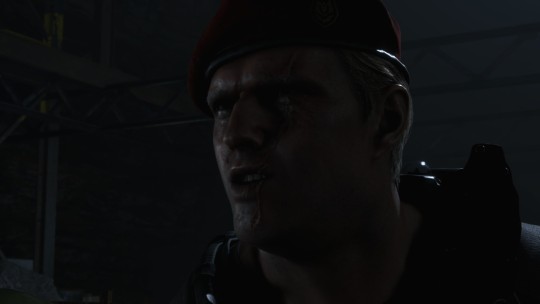
The other reason I have little bit of a grudge against 4 is the lack of connection to the overall plot of the game - the fact they just establish that Umbrella was taken down in a monologue at the beginning of the game and then we never get to see it in any mainline games is incredibly frustrating and disappointing, and it's something I hope that the remakes can address. Sadly this game doesn't particularly point to that, though perhaps the DLC does.
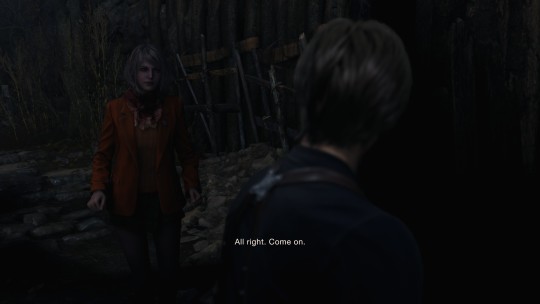
The main plot of the game has been polished up a lot too, with the character's having become a lot more fleshed out and interesting. Ashley would be the biggest improvement, instead of simply being a damsel in distress being an actual character with feelings and everything.
I think the remake has fixed most of the issues I had with the original, and maintains the same level of quality Capcom has produced with most of their games. While I'll never like 4 as much as many do, the remake has allowed me to appreciate it more.
Significance: 1/3
Grade: A
#game reviews#games#reviews#videogames#horror#horror games#re4#re4 remake#resident evil#re#biohazard#biohazard 4
7 notes
·
View notes